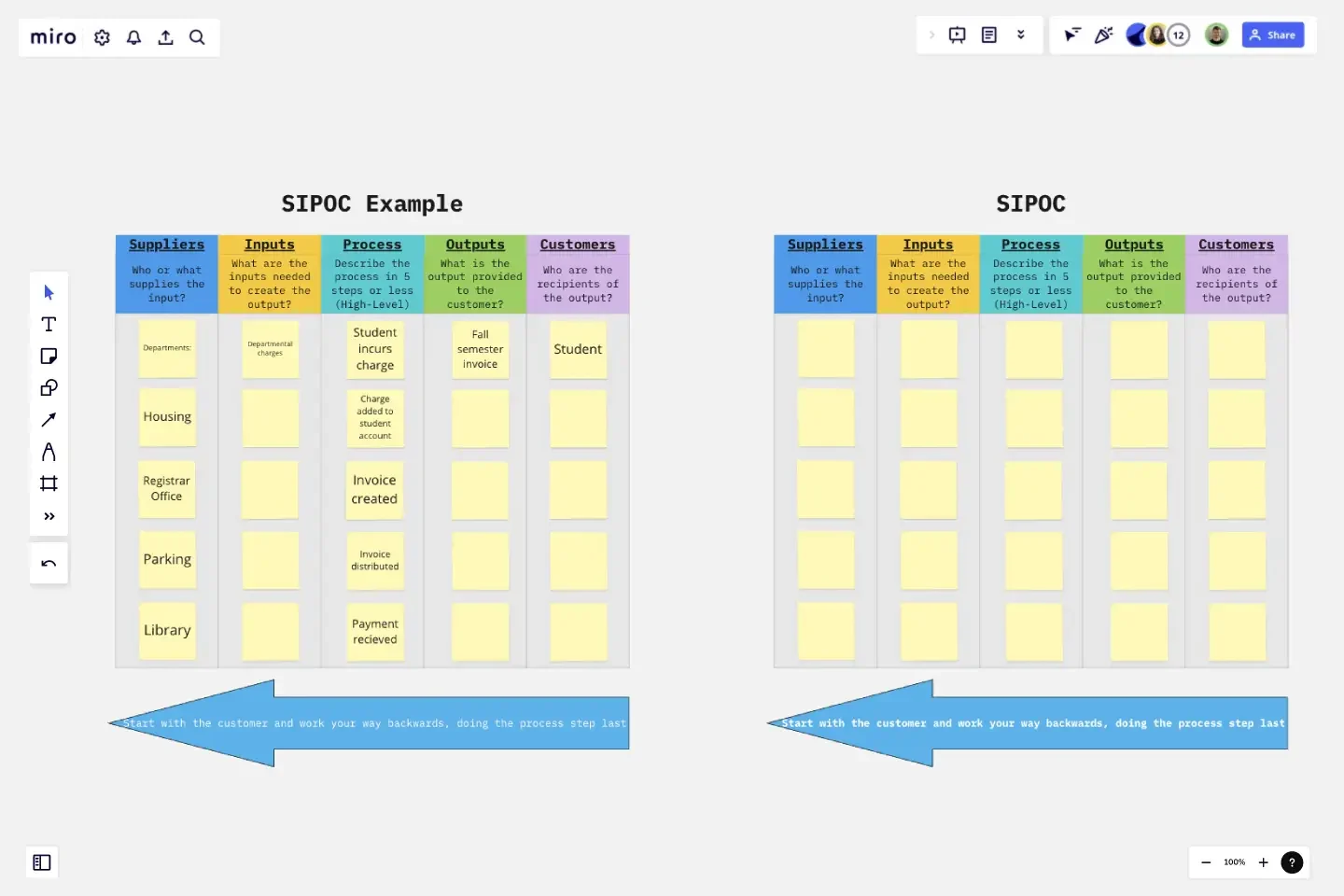SIPOC by Dagmar Vlahos
The SIPOC Template can be used as the first step in understanding the process being evaluated.
This template is designed to be utilized as a brainstorming tool during the project documentation stage with a team to identify customers and suppliers (stakeholders).
How to use the SIPOC Template:
(Start with the Customers and work backwards)
Step 1: Customers
Brainstorm with the team to identify the customers who receive the output the process creates.
Step 2: Outputs
Articulate the outputs of the process that gets delivered to the customer.
Step 3: Inputs
Document the inputs that are needed to create the output.
Step 4: Suppliers
Identify who or what supplies the input required to create the output.
Step 5: Process
Describe the high-level steps that make up the process in 5 steps or less.
This template is a collaborative effort
Utilizing an approach of collaboration, Dagmar Vlahos and Thomas Lencki Jr. lead employees through their Lean journey. They support all employees at all of the campuses in University System of New Hampshire through training, mentorship, and coaching. Using this approach Dagmar and Tom created this template together.
#Lean all day, every day!
This template was created by Dagmar Vlahos.
Get started with this template right now.
SIPOC Process Map
Works best for:
Agile Metodology
The SIPOC Process Map is a visual tool for documenting the high-level process flow of a system or project. It helps teams identify Suppliers, Inputs, Processes, Outputs, and Customers, facilitating a holistic understanding of the value stream. This template enables teams to visualize key process elements and interdependencies, empowering them to identify areas for improvement and optimize workflow efficiency. By promoting transparency and collaboration, the SIPOC Process Map empowers organizations to deliver value more effectively and satisfy customer needs.
Canvas Playground Template
Works best for:
Templates
The canvas playground template is the ultimate way to explore all the features that make up Miro's Intelligent Canvas. This dynamic and interactive space is designed to help you get work done faster while engaging your team. From AI creation and Sidekicks to intelligent widgets, this template allows you to try it all and discover how these capabilities can streamline your workflow and enhance collaboration.
Miro Basics: Guide for New Participants
Works best for:
Agile
The Miro Basics: Guide for New Participants template offers a comprehensive overview of essential Miro functionalities and best practices for new users. It provides step-by-step instructions, tips, and examples to help participants navigate the Miro platform confidently and effectively. This template empowers new users to leverage Miro's collaborative features and unleash their creativity in visual collaboration. By promoting proficiency and engagement, the Miro Basics: Guide for New Participants enhances collaboration and productivity across teams.
Soccer Retrospective
Works best for:
Agile Methodology, Retrospectives, Meetings
The Soccer Retrospective template offers a sports-themed approach to retrospectives, using the game of soccer as a metaphor for teamwork and strategy. It provides elements for reflecting on past performances, analyzing strengths and weaknesses, and setting goals for improvement. This template fosters a competitive yet collaborative spirit, encouraging team members to work together towards common objectives. By leveraging the metaphor of soccer, the Soccer Retrospective empowers teams to refine their tactics, enhance communication, and achieve their goals effectively.
Learning Loop Retro Template
Works best for:
Retros, Agile
The Learning Loop Retro template is a powerful tool designed to help teams reflect on their projects by recognizing successes and identifying areas for improvement. This template is part of Miro's Intelligent templates, which streamline workflows and keep teams engaged by integrating AI, interactive tools, and seamless integrations. One key benefit of the Learning Loop Retro template is its ability to drive continuous improvement. By regularly reflecting on their work and identifying areas for enhancement, teams can consistently elevate their performance and achieve better outcomes.
Kanban Pizza Game
Works best for:
Agile, Kanban
The Kanban Pizza Game is an interactive way for teams to learn and apply Kanban principles. By simulating a pizza delivery process, teams experience how to visualize work, limit work in progress, and optimize flow. Through rounds of iteration and reflection, participants gain insights into continuous improvement and lean thinking, fostering collaboration and driving efficiency. Get ready to slice through inefficiencies and deliver value faster with the Kanban Pizza Game!
